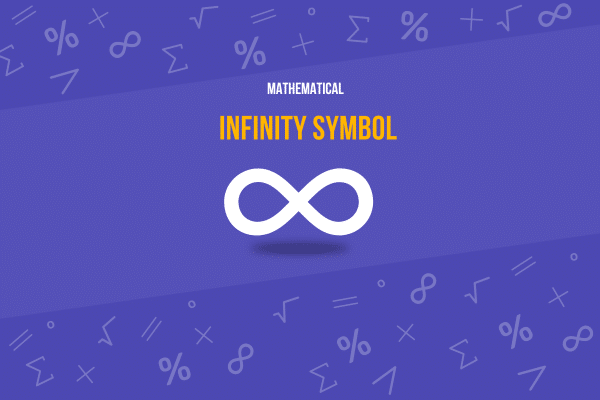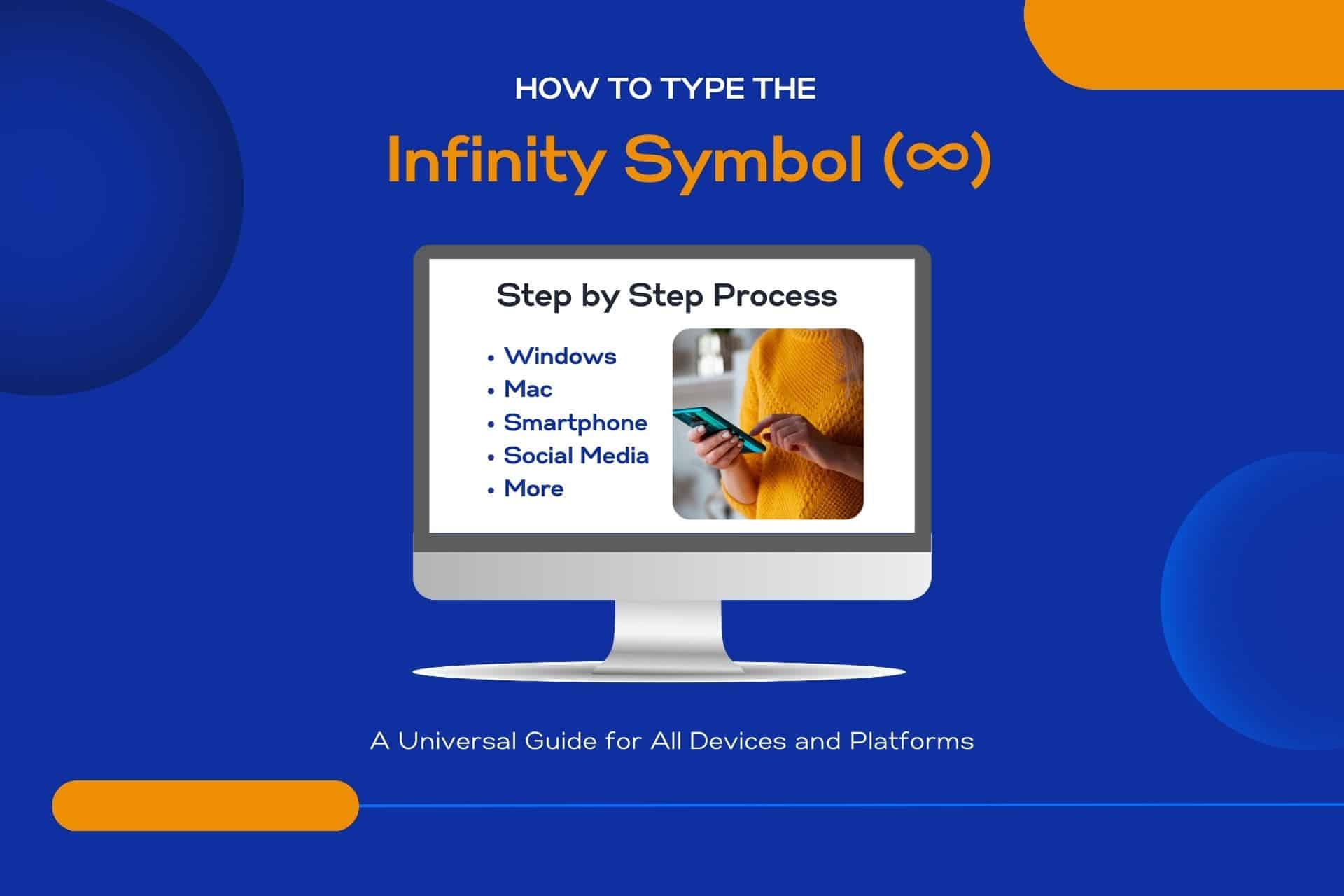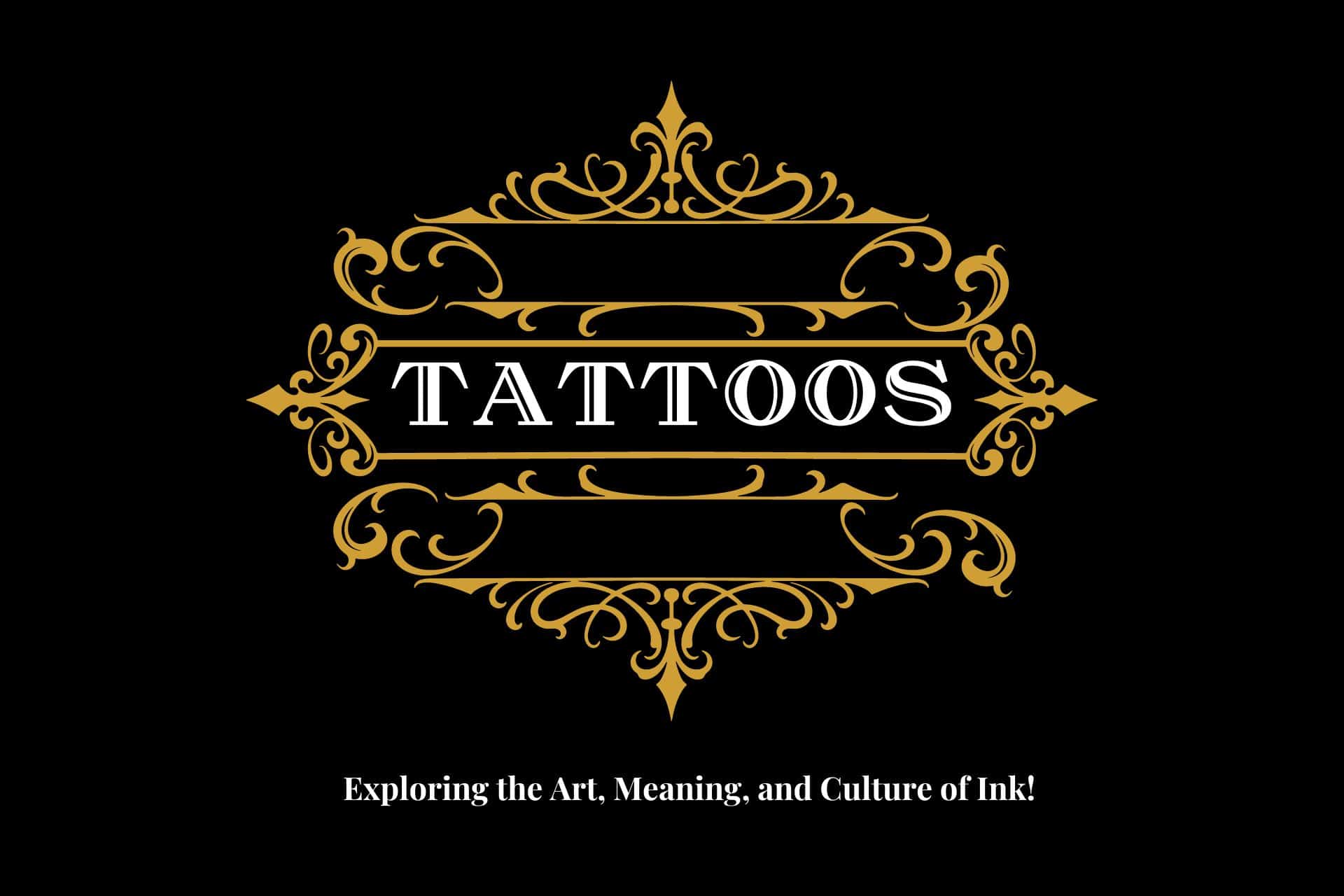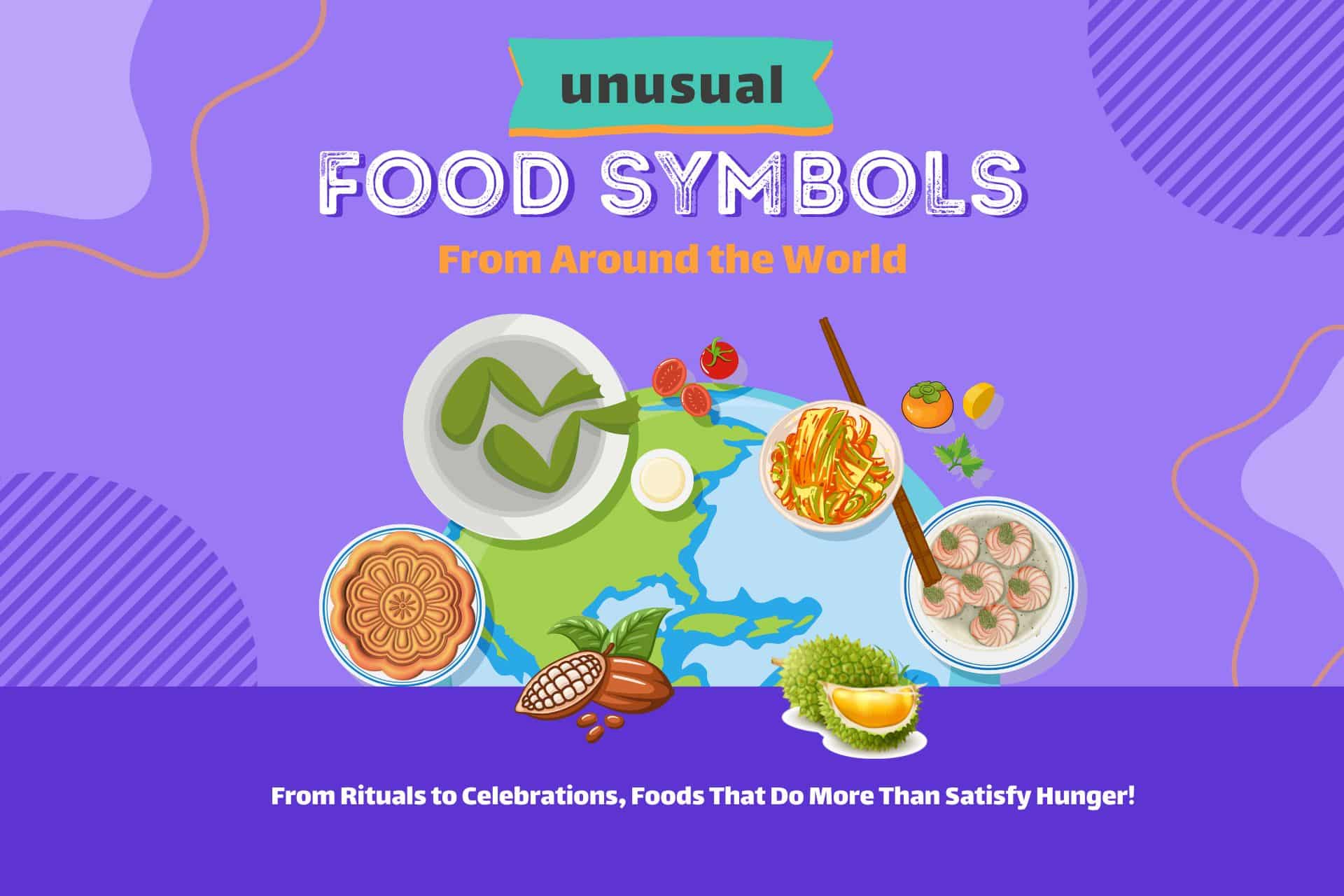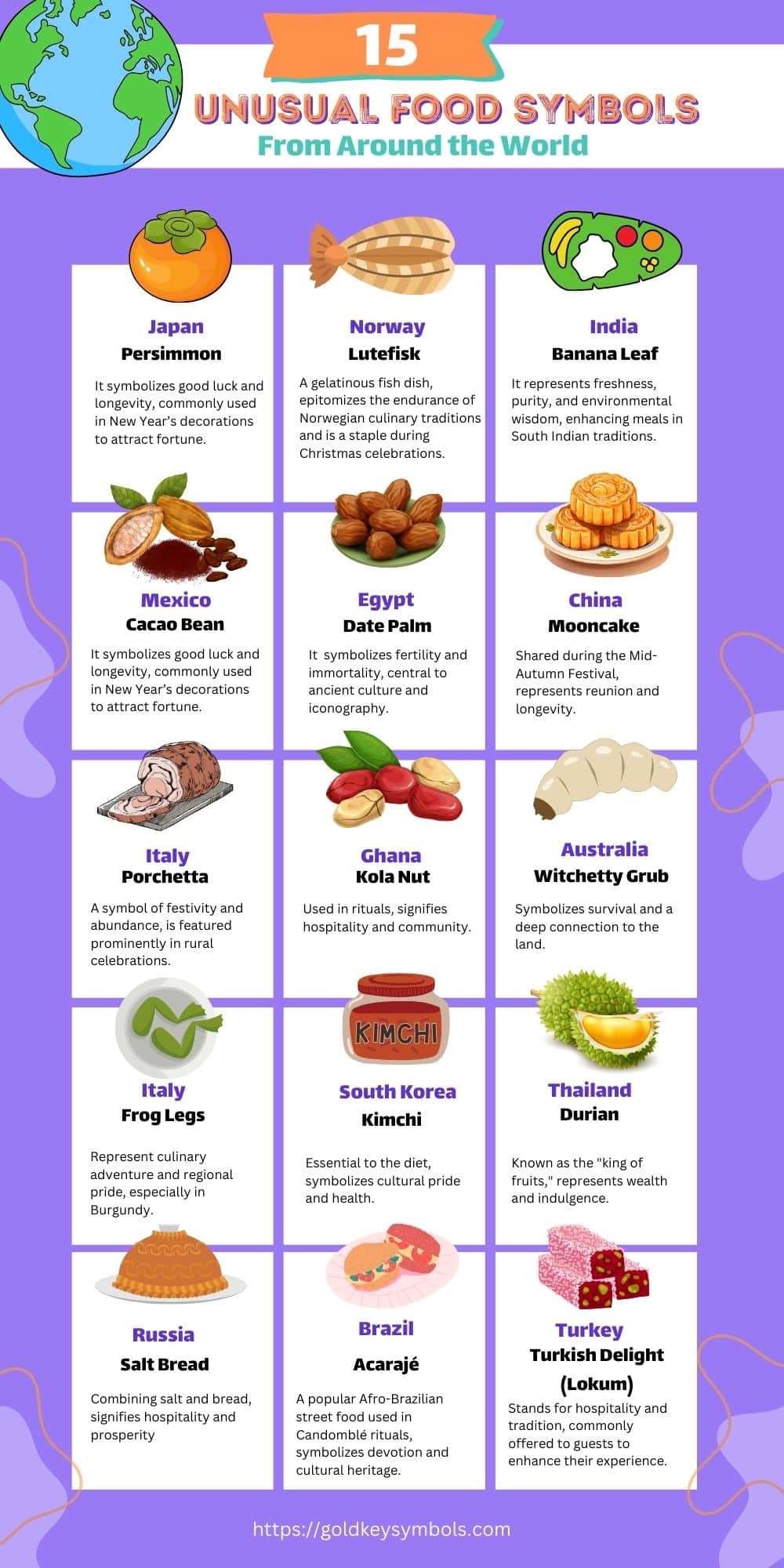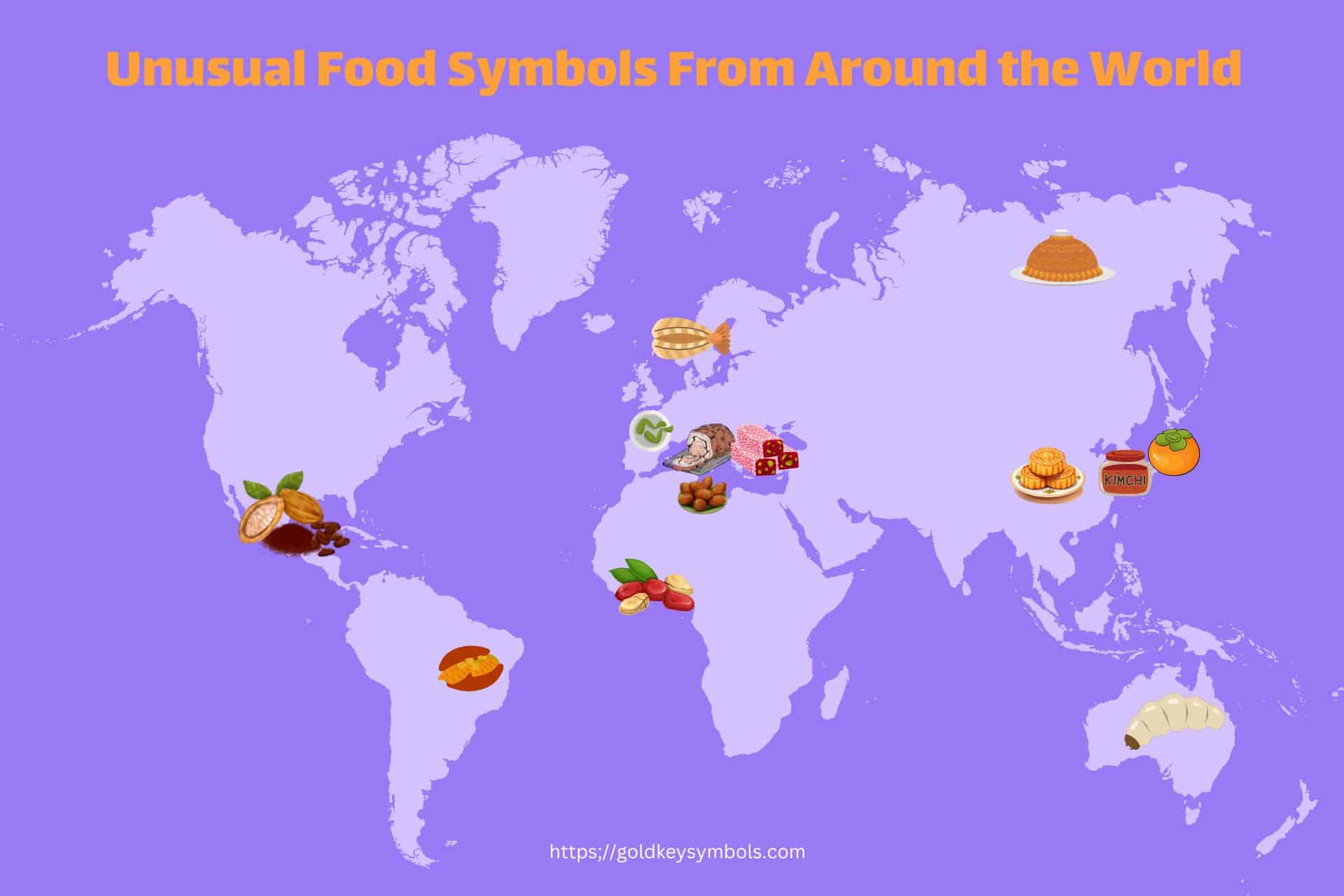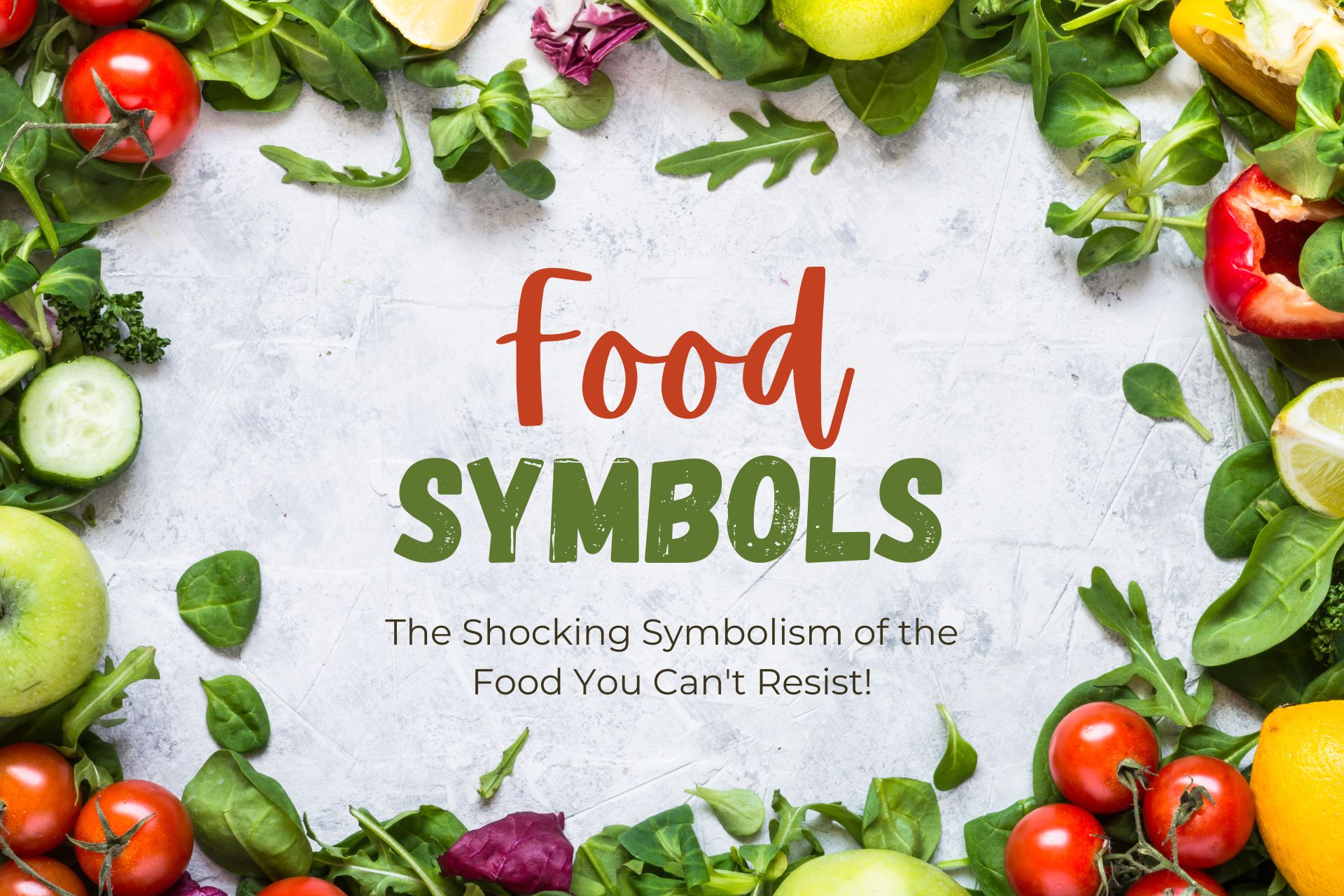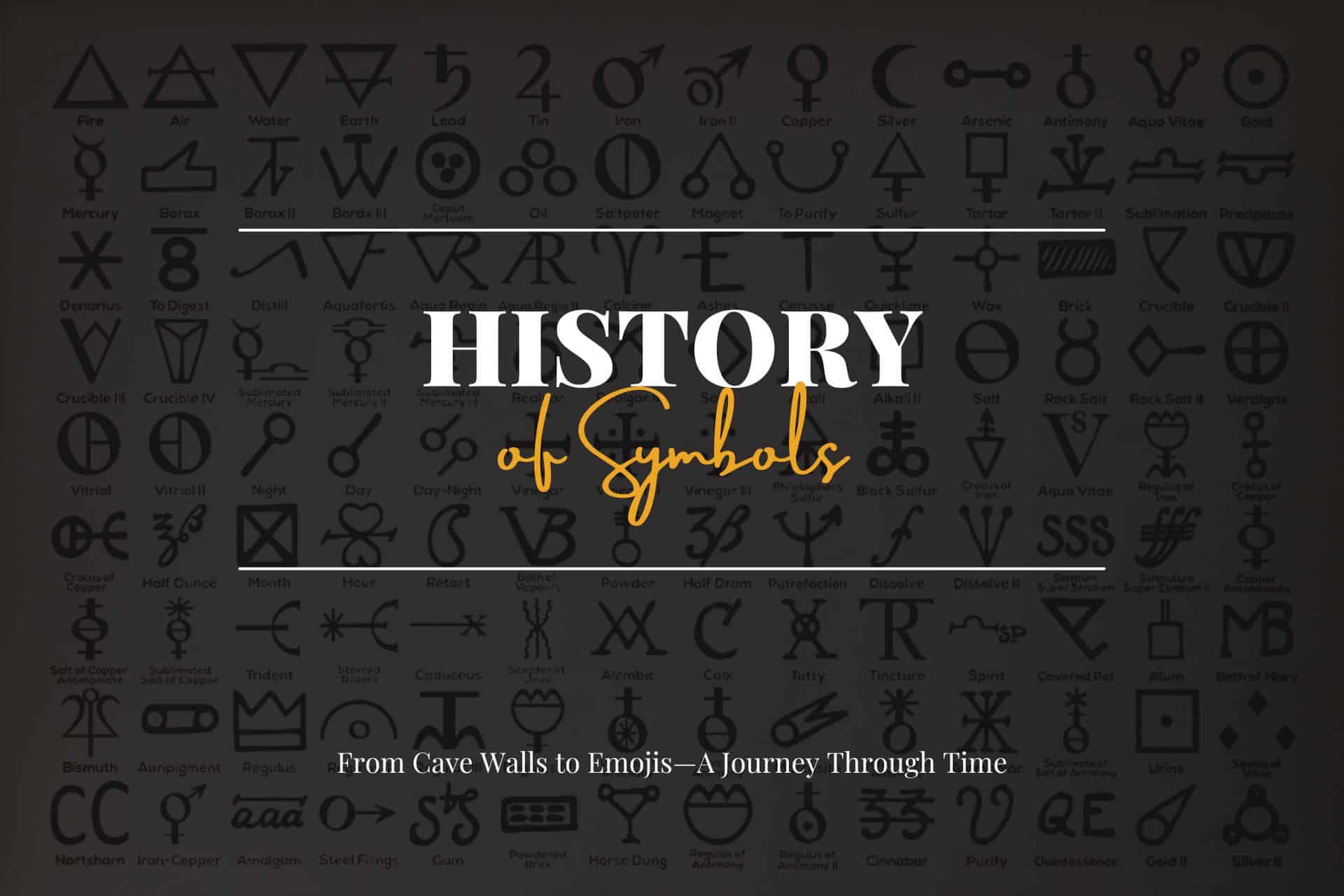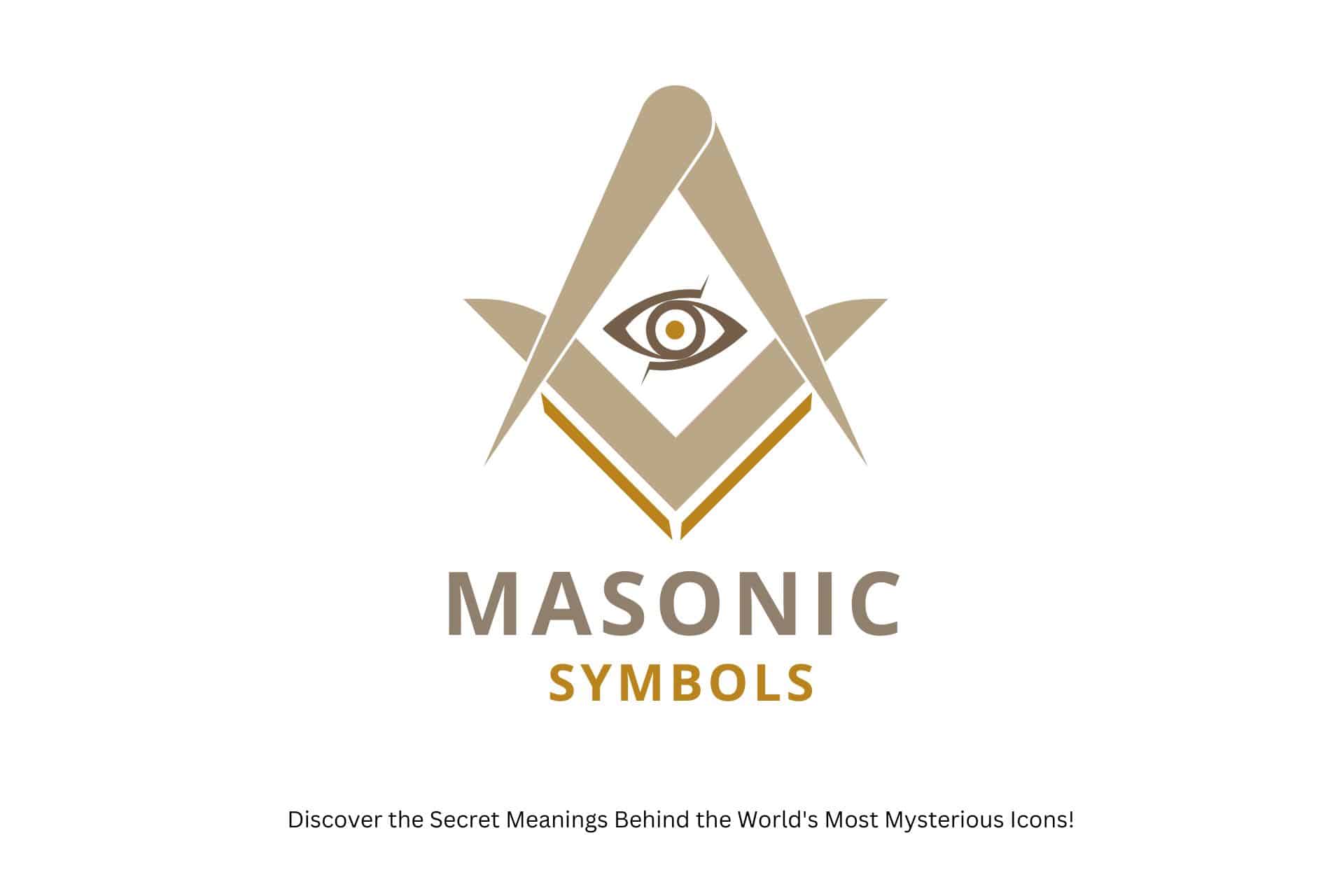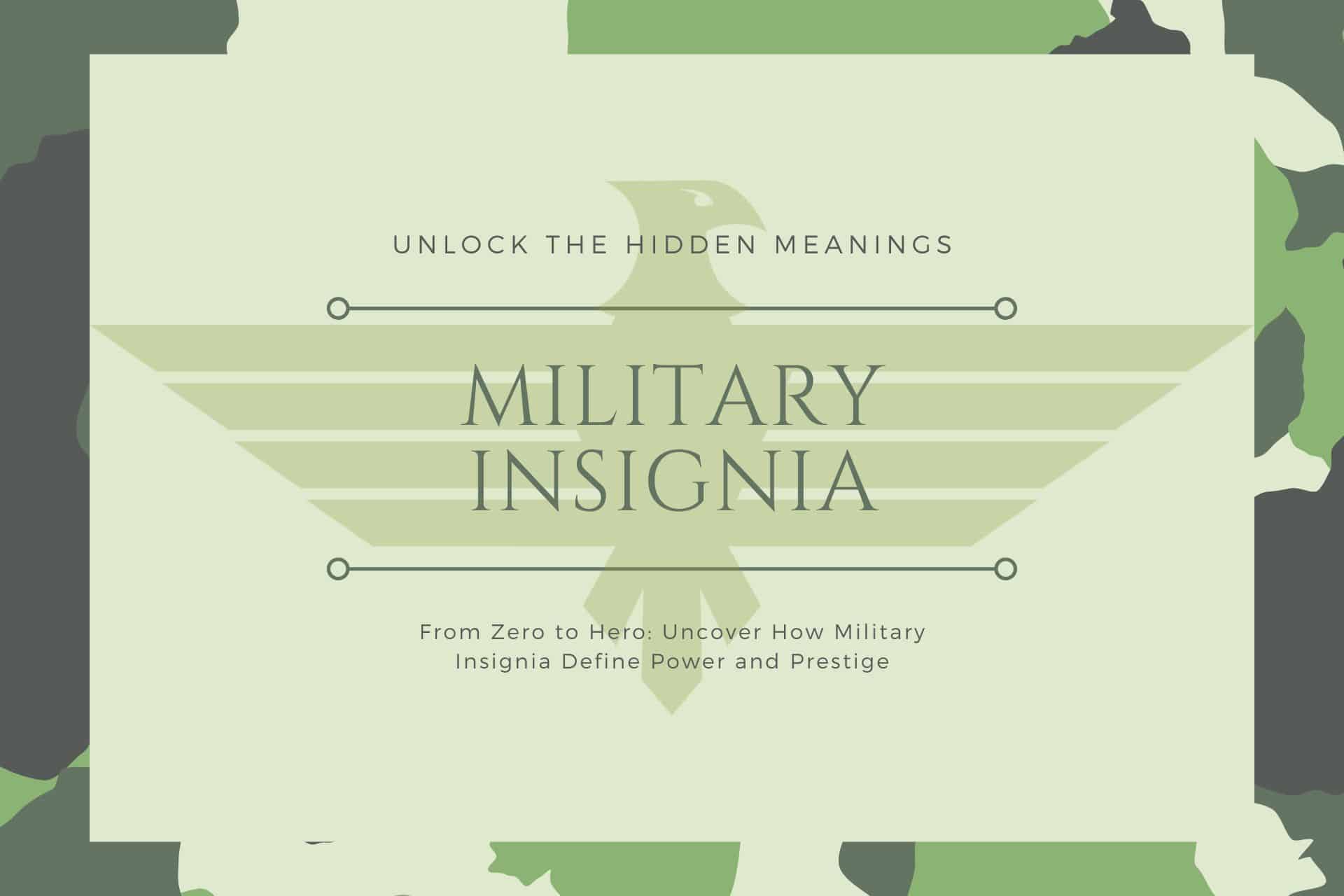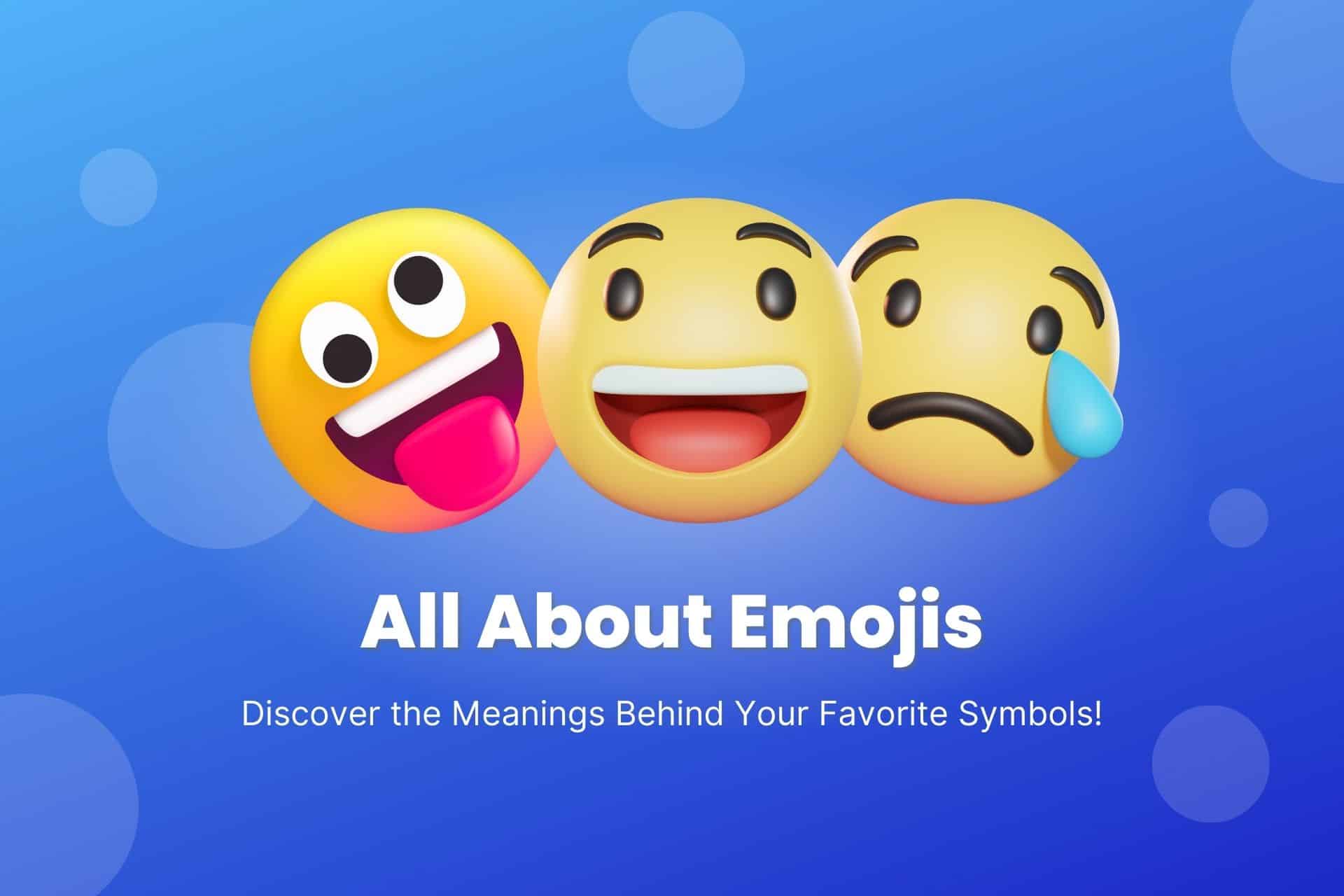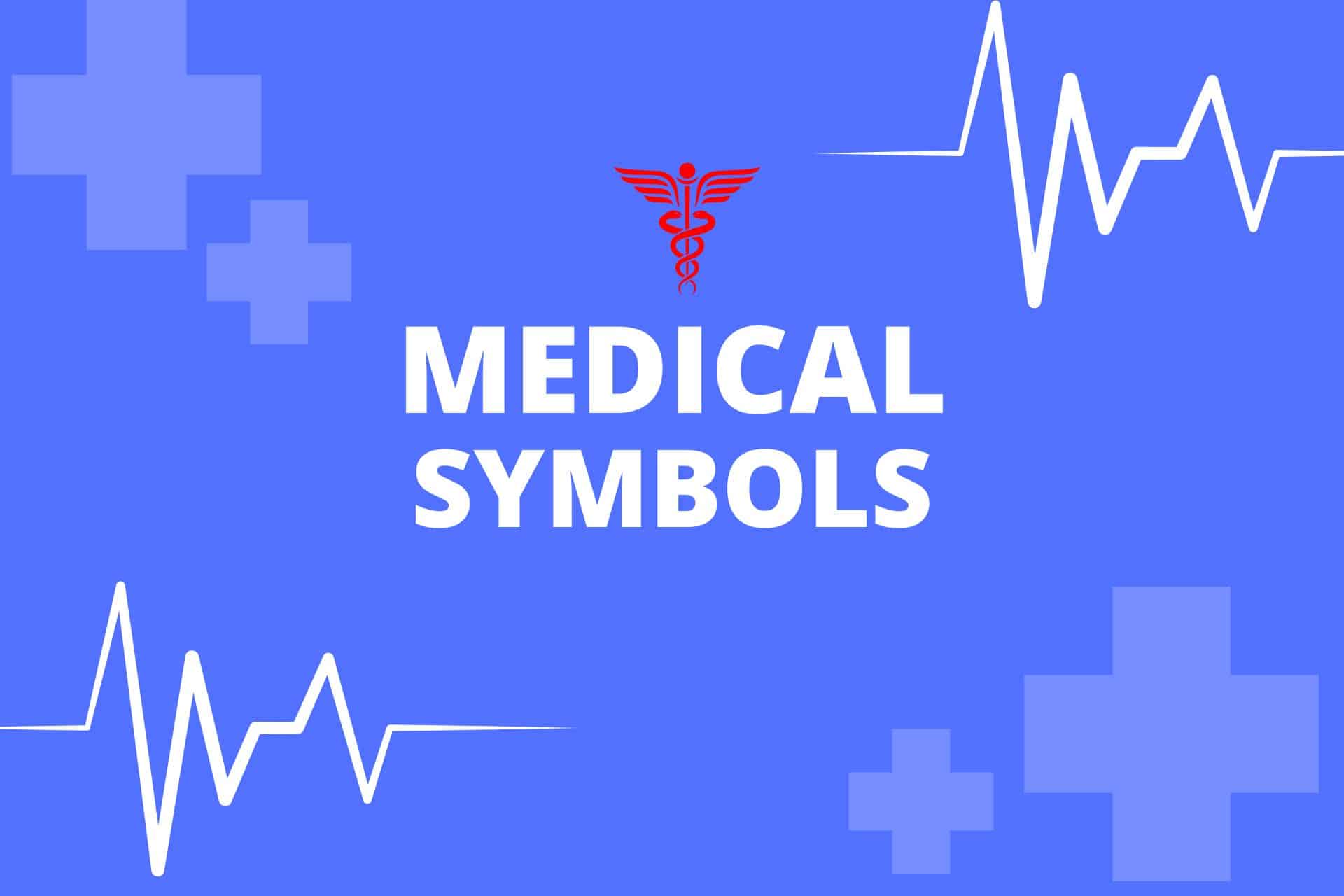Find Out Why Everyone is Obsessed with This Mystical Symbol!
Are you curious about what the infinity tattoo means?
The infinity symbol is often seen as a symbol of boundless love, limitless potential, and eternal existence; its meaning can sometimes leave us puzzled. This article aims to shed light on the tattoo’s rich symbolism and timeless design.
Whether etched on your forearm, shoulder, or ankle, it varies from simple symbols to personalized designs and can reflect your journey, beliefs, or values.
By reading further, you’ll gain a practical understanding of the infinity tattoo’s meaning and design variations. So, why wait?
Continue reading to discover your perfect tattoo design. Rest assured, you’ve come to the right place for comprehensive information on the infinity tattoo.
Let’s get started!
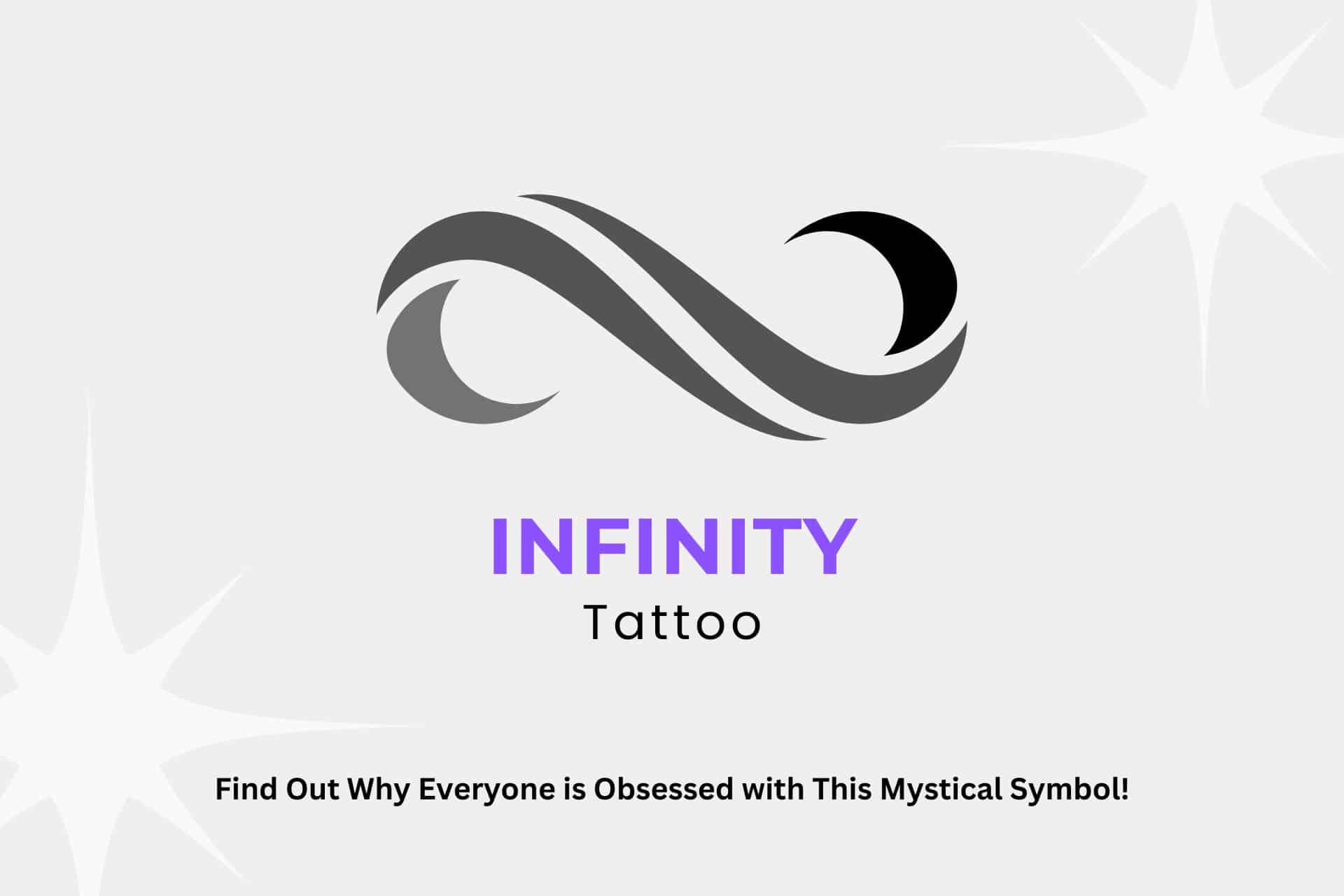
Here’s What You Will Find

Key Takeaways
Infinity Tattoo
Symbolism of Infinity Tattoos: Infinity tattoos are elegant designs that represent endless possibilities, eternal existence, and limitless love. Their simplicity encourages self-expression and interpretation based on individual values.
Origins and Variations: Originally a mathematical concept, the infinity symbol has been adapted into tattoo art with various elements like words, hearts, or custom designs. Popular variations such as the Infinity Heart, Double Infinity, and Infinity Anchor symbolize endless love, balance, and unwavering strength.
Design Elements: Using diverse design elements like words, hearts, or custom symbols uniquely expresses the wearer’s beliefs and values. The infinity symbol is the central element, with other components enhancing its meaning.
Placement and Size: The forearm, shoulder, or ankle are common placements for infinity tattoos. The size of the tattoo can vary, depending on the intricacy of the design and the individual’s preference for visibility.
What is an Infinity Tattoo?
An infinity tattoo, often recognized by its lemniscate symbol (∞), is a tattoo design that represents the concept of limitless possibilities and eternity.
Notably, the infinity symbol is a mathematical representation widely adopted into popular culture. This figure-eight-on-its-side symbol is a powerful emblem used in various contexts globally, primarily due to its simplistic yet elegant design.
Features of an Infinity Tattoo:
- Simplicity: The infinity tattoo is a simple design that delivers a powerful message. Its simplicity makes it an adaptable tattoo design that can work on any part of the body, whether a small symbol on the wrist or a larger design on the back.
- Elegance: Despite its simplicity, the infinity tattoo is incredibly elegant. Its smooth lines and symmetry make it visually pleasing, often as a focal point when inked prominently.
- Message: Without uttering a single word, the infinity tattoo speaks volumes. It represents endless possibilities, limitless potential, and eternal existence.
The infinity tattoo has a timeless appeal, making it a popular choice among tattoo enthusiasts. Its design isn’t limited, making it suitable for those who believe in their boundless potential.
- Timeless Appeal: The infinity tattoo has existed for decades, yet its popularity hasn’t waned. Its timeless appeal lies in its powerful symbolism and its ability to be personalized.
- Boundless Potential: The infinity symbol constantly reminds us of our limitless potential. It is a motivational emblem that pushes individuals to reach their full potential without restrictions.
The infinity tattoo isn’t merely about an everlasting cycle; it’s a bold statement about your unwavering faith in the boundless expanse of the universe and your place within it.
- Statement: An infinity tattoo is more than a design; it’s a statement. It declares one’s faith in the universe’s infinite expanse and belief in one endless journey.
- Emblem of freedom: The infinity tattoo symbolizes freedom. It’s a statement about one’s belief in one’s unending journey through life and refusing to be confined by societal norms or personal limitations.
An infinity tattoo isn’t just ink on skin—it’s a constant reminder that you’re limitless. It serves as a beacon of inspiration and a reminder of one’s limitless potential. It’s more than just a tattoo; it’s a lifestyle, a philosophy, and a personal mantra. It symbolizes infinite possibilities and endless journeys, forever etched on the skin as a constant reminder of one’s potential.
Symbolic Meanings of Infinity
You might be wondering what the infinity symbol represents. It’s not just a trendy design; it carries deep meanings and modern interpretations that many find personally significant.
Let’s explore these symbolic meanings and how they might resonate with you.
What Does the Infinity Symbol Represent?
In the world of symbolism, the infinity symbol carries many profound concepts and ideas. The infinity symbol isn’t just a simple mathematical symbol but a representation of various philosophical and spiritual concepts that have resonated with humans across different cultures and timeframes.
- Limitless Possibilities: The infinity symbol is often associated with limitless possibilities. This concept is deeply rooted in the symbol’s history and mathematical applications. In the world of mathematics, infinity represents a number or concept that’s larger than any possible number. This concept has been extended to the symbolic domain, signifying the idea that the possibilities in life are endless. It encourages individuals to look beyond the obvious, explore new avenues, and embrace all opportunities. It serves as a reminder that there are no boundaries to what we can achieve and encourages us to always strive for more.
- Infinite Power: The infinity symbol also signifies infinite power. This interpretation is often linked to spiritual or religious contexts, where the symbol represents an omnipotent divine power. The concept of infinite power reminds us of the vast strength within us, capable of overcoming any obstacle or challenge. It reinforces the belief that our inner strength and resilience are boundless, allowing us to unlock our true potential.
- Boundless Love: Additionally, the infinity symbol is synonymous with boundless love. This is often seen in artistic and cultural contexts, such as jewelry or tattoos, where the symbol expresses love transcending time and space. It embodies an eternal and unending love devoid of any constraints or boundaries. It symbolizes a love that’s forever growing and evolving, reminding us of the depth and strength of our emotional capacities.
- Freedom and Unending Opportunities: The infinity symbol symbolizes unending opportunities and freedom. It symbolizes the refusal to be confined by the physical world’s limitations. This concept resonates deeply with individuals seeking liberation from societal pressures or constraints. It encourages us to break free from the chains of convention and explore life’s infinite possibilities.

Modern Interpretations and Personal Meaning
While the infinity symbol’s historical and universal meanings are impactful, its modern interpretations and personal significance are equally profound.
The infinity tattoo has gained considerable popularity in contemporary society. This isn’t simply because of its visually appealing design but due to the deep and diverse meanings it holds:
- Symbol of Unending Possibilities: For many, the infinity symbol represents limitless possibilities. It is a constant reminder that life is full of opportunities, and the growth potential is immeasurable. This interpretation is often embraced by adventurous souls who believe in living without restrictions, constantly exploring new avenues, and pursuing their passions. Therefore, their choice to get an infinity tattoo is a physical manifestation of this belief, an emblem that motivates them to push their boundaries and never settle continually.
- Badge of Personal Freedom: In the modern world, the infinity tattoo is also seen as a symbol of personal freedom. This interpretation is particularly prevalent among individuals who value independence and strongly desire to shape their path. For them, the tattoo declares that societal norms or expectations don’t bind them. Instead, they embrace life’s infinite opportunities, making choices and forging their unique journey.
- Pledge of Endless Love and Loyalty: The infinity symbol is also common in romantic contexts, serving as a pledge of endless love and loyalty. Couples often get matching infinity tattoos to express their enduring commitment to each other. In this case, the symbol represents a love that isn’t confined by time or space, an eternal love. It is a constant reminder of their bond, a promise that their love for each other will remain unwavering irrespective of the circumstances.
Ultimately, the infinity tattoo is a powerful symbol as diverse as the individuals who wear it. It’s not just a trendy design; it’s a personal statement, a testament to one’s beliefs and values.
Whether it speaks to your adventurous spirit, freedom, or unwavering love, the infinity tattoo represents your endless journey toward self-expression and actualization.
Design and Variations
Now, let’s explore the world of design and variations in infinity tattoos. You’ll find a variety of typical design elements and popular variations, all with distinctive meanings. Selecting the appropriate design for you is crucial, so let’s begin.
Common Design Features of Infinity Tattoos
When you explore the world of infinity tattoos, you’re met with an endless canvas of creativity. The most common design feature is the infinity symbol, a figure eight lying horizontally.
This symbol alone holds a powerful message of everlasting, unbroken continuity. But the beauty and depth of infinity tattoos lie in the myriad ways artists and bearers can embellish this basic symbol.

- Infinity Symbol: The base of these tattoos is the infinity symbol, a sideways figure eight. The symbol itself is a universal sign of endlessness and continuity. This could represent many facets, such as infinite love, strength, or resilience. It’s a bold statement, embodying the concept of eternity.
- Words, Names, or Dates: A popular way to personalize infinity tattoos is to intertwine the infinity symbol with words, names, or significant dates. This deeply personal feature allows one to immortalize a cherished memory or relationship. The words or names could be of someone special, a life-changing date, or a significant moment. It’s a beautiful way to eternalize a moment or a bond that has shaped the bearer somehow.
- Hearts: Hearts are another common element found in infinity tattoo designs. This combination symbolizes infinite love or affection for a partner, family member, or oneself. The heart and infinity symbol fusion is a potent symbol of endless love and devotion.
- Feathers or Birds: Feathers or birds are often incorporated into infinity tattoo designs, symbolizing freedom, independence, and the desire to soar high. This design can be a personal emblem of one’s longing for liberation or a tribute to their free spirit.
- Custom Elements: Lastly, it’s essential to remember that tattoos are a form of self-expression. Therefore, adding a unique twist to your infinity tattoo design isn’t just encouraged; it’s a part of the process. Your tattoo should represent your story, whether a particular color, additional symbols, or a specific placement on your body.
Infinity tattoos are a beautiful canvas for limitless expression. With every design, they encapsulate the boundless nature of our lives, relationships, and personal growth. The key is finding a design that resonates with your story and understanding of ‘infinity.’
Popular Variations and Their Meanings
Exploring the arena of infinity tattoo designs, it’s intriguing to see how different popular variations carry their unique meanings. These designs can profoundly reflect one’s personal story or philosophy.
The Infinity Heart
The infinity heart symbol is a popular variation with a deep and poignant meaning. It’s symbolic of an endless love or a profound emotional connection.
This is ideal for hopeless romantics or those deeply passionate about their relationships. The intertwining of the infinity sign and the heart symbolizes a bond that isn’t limited by time or circumstances. It’s a visual representation of a love that’s eternal and limitless.

This design can be customized in various ways to personalize the expression of one’s sentiment further. To enhance its significance, you can incorporate colors, names, or dates into the design.
The Double Infinity
Another variation with unique symbolism is double infinity. It stands for balance and harmony between opposing forces, an apt representation for those who believe in the interconnectedness of everything in the universe.

The double infinity symbolizes a union of two distinct entities into a harmonious whole. This can be interpreted in various ways, such as balancing good and evil, day and night, or life and death. This tattoo design reminds us of the delicate balance governing the universe and our existence.
The Infinity Cross
The infinity cross, another popular variation, represents eternal faith and spirituality. This is a fitting choice for religious individuals with a deep spiritual inclination.

The cross, a symbol of faith and divine love intertwined with the infinity sign, signifies the eternal nature of these spiritual beliefs. This tattoo design can visually affirm one’s unwavering faith and commitment to one’s spiritual journey. It can be customized with religious scriptures or symbols to enhance its meaning further.
The Infinity Anchor
The infinity anchor is a deeply meaningful symbol of unwavering strength and grounding. This design is a beacon for those who value stability and steadfastness.

The anchor, a symbol of strength, safety, and stability, combined with the infinity sign, signifies an unending source of these qualities. This tattoo design can remind one of one’s strength and resilience in adversity.
How to Choose the Right Design for You
Choosing the right infinity tattoo design for you isn’t a decision to be taken lightly. It involves careful consideration of your personal beliefs, experiences, and philosophies. A tattoo, particularly an infinity tattoo, should reflect who you are – your personality and your values.
A simple and sleek design might be your perfect choice if you are a minimalist. Minimalist infinity tattoos are often unadorned and unembellished—a simple loop that represents the concept of infinity. This design speaks volumes about your preference for simplicity, elegance, and belief in the power of subtlety.
- Design for Minimalists: A simple, unadorned infinity loop. Represents the concept of infinity subtly and elegantly.
- Meaning: This design indicates a love for simplicity and elegance. It also shows your belief in the power of subtlety.
On the other hand, if you’re more expressive and extroverted, you might want to choose a design with additional elements like birds, hearts, flowers, or stars.
These elements can add a layer of complexity and personalization to your infinity tattoo. Birds, for instance, can symbolize freedom or the desire to reach greater heights. Hearts represent love and affection, while flowers symbolize growth and beauty.
- Design for Expressive Personalities: An infinity loop embellished with birds, hearts, or flowers.
- Meaning: The additional elements can represent various personal beliefs or experiences. For instance, birds can symbolize freedom or aspiration, hearts can represent love, and flowers can symbolize growth or beauty.
You could also consider incorporating dates or names that are special to you. Birthdates, anniversaries, or names of loved ones can make your infinity tattoo more personal and meaningful.
- Design with Dates/Names: The design includes an infinite loop with dates or names.
- Meaning: The dates or names can represent important milestones or significant people in your life.
Remember, your tattoo is a visual representation of your journey and aspirations. It’s about expressing infinite potential, boundless love, or limitless dreams. Take your time, explore different variations, and find the design that resonates with you. Don’t rush the process – it’s your freedom to wear your story on your skin.
- Design for Personal Journey: An infinity tattoo that visually represents your journey and aspirations.
- Meaning: This design expresses infinite potential, boundless love, or limitless dreams.
Placement and Size Considerations
When considering getting an infinity tattoo, two significant factors to mull over are its placement and size. These aspects are crucial in determining your tattoo’s visibility and personal significance.
Placement
For the placement of your infinity tattoo, the choices are as endless as the symbol itself. You have the liberty to choose any location on your body. However, it’s important to remember that some areas can be more painful than others. Here are some common spots and their respective characteristics:
- Wrist: This is a popular spot for small, delicate tattoos like the infinity symbol. It’s visible enough for you to appreciate your tattoo frequently but can also be easily covered if needed. However, due to the thin skin and proximity to bones, it can be quite painful.
- Back of the neck: This location is perfect for a semi-private tattoo concealed with hair or clothing. The pain level is generally moderate.
- Ankle: The ankle is another great location for small tattoos. It can be easily hidden or shown off. The pain level can be high due to the presence of bone and lack of muscle.
- Inner arm or wrist: These locations are ideal for slightly larger infinity tattoos. They’re easily visible and make a bold statement. Pain levels can vary.
- Ribcage: If you prefer a more discreet location, the ribcage is a good choice. It allows for a larger design, but remember, it’s considered one of the most painful spots to get a tattoo.
Size
Moving on to size, it’s all about individual expression and personal freedom. Larger tattoos can make a bold statement, while smaller ones may be more subtle and personal. Here are some points to consider:
- Large Infinity Tattoos: These make a strong statement and can include additional elements like names, quotes, or other symbols. They’re highly visible and often placed on larger surfaces like the back, chest, or arm.
- Medium Infinity Tattoos: These are perfect for those who want their tattoos noticeable but not overly dominant. They can be designed elaborately and are suitable for locations like the forearm, shoulder, or calf.
- Small Infinity Tattoos: These are understated and private. Ideal for places like the wrist, ankle, or behind the ear, they subtly convey the powerful message of infinity.
Regardless of size and location, an infinity tattoo carries a profound message. It speaks of endless possibilities, eternal love, or infinite strength, making it a meaningful choice for many.
Other Considerations
The placement and size of your infinity tattoo are crucial elements that can significantly influence its visibility and personal impact. Here are some detailed considerations for each aspect:
Bold Statement
If you aim to make a bold statement with your infinity tattoo, consider larger and more visible areas such as your forearm or shoulder. These areas provide ample space for detailed designs and enhance the tattoo’s visibility, making it a center of attention.
- Forearm: The forearm is a popular tattoo choice due to its high visibility. It’s an ideal spot for those who want their tattoos easily seen. This area also offers enough space for medium to large designs.
- Shoulder: The shoulder is another great spot for a bold tattoo. Depending on your outfit, this area can accommodate large tattoos and be easily covered or displayed.
Discreet Display
On the other hand, if you prefer a more discreet display, smaller tattoos in hidden spots like your ankle or behind the ear can be perfect. These areas aren’t immediately visible, providing a sense of surprise and personal touch.
- Ankle: Ankle tattoos can be small, subtle, and easily hidden, making them perfect for those who want a more discreet tattoo. They can also be shown off when wearing short pants or skirts.
- Behind the Ear: Another hidden spot provides a surprise element. It’s a popular spot for small and delicate designs.
Size of Infinity Tattoo
When deciding on the size, it’s important to note that intricate designs may require more space to showcase their beauty fully. For example, a complex infinity symbol with additional elements like flowers, words, or other symbols may necessitate a larger area.
Considerations for Size:
- Small Tattoos: Small infinity tattoos can be discreet but still impactful. They’re great for first-time tattoo enthusiasts or those who prefer a minimalistic style.
- Medium Tattoos: Medium-sized tattoos offer more room for detail and complexity without being too overwhelming. They’re a balance between visibility and subtlety.
- Large Tattoos: Large tattoos are perfect for intricate designs and individuals who want to make a bold statement. They provide enough space for detailed artwork, adding more depth and significance to the design.
Your tattoo should reflect your individuality, so embrace the freedom to make it uniquely yours. Whether you choose a bold, large design or a small, discreet one, the important thing is it resonates with your personality and comfort level.
The Process of Getting an Infinity Tattoo
What to Expect When Getting an Infinity Tattoo
Like any tattoo, getting an infinity tattoo is a journey that goes beyond picking a design and getting inked. It’s a process that involves careful consideration, personal expression, and a bit of bravery. For those ready to make their mark with this enduring symbol, knowing what lies ahead can make the experience exciting and rewarding.
Steps in the Tattooing Process
Consultation
The first step towards your infinity tattoo begins with a consultation. This is your chance to discuss your vision with the tattoo artist. Bring any sketches or ideas, and be prepared to answer questions about your desired tattoo size, placement, and reasons behind choosing an infinity symbol. This discussion helps ensure you’ll be happy with the final design forever.
Design
After the initial consultation, your tattoo artist will create a design based on your ideas. This might take a few days, depending on the artist’s schedule and the complexity of your tattoo. Once the design is ready, you can review it and make any final adjustments. It’s important to be completely satisfied with the design, as it will be a permanent addition to your body.
Session:
The actual tattooing session can vary in length, depending on the design’s complexity and size. An infinity tattoo, which is typically a simpler and smaller design, may take anywhere from one to several hours. During the session, the artist will first apply a stencil of the design on your skin. After you approve the placement, they will start the tattooing process using sterilized equipment. Expect some discomfort, but remember, a temporary discomfort for a lifetime of meaningful ink is often considered well worth it!
Aftercare
Proper aftercare is crucial for the healing and longevity of your tattoo. Your artist will provide specific instructions, which usually include keeping the tattoo clean, applying ointment, avoiding sun exposure, and soaking in water. These guidelines are essential to prevent infection and ensure your tattoo heals perfectly.
Tips for a Smooth Tattoo Experience
- Hydrate and Rest Well: Ensure you are well-rested and hydrated before your tattoo session. Being in good physical condition can help you handle the discomfort better during the session.
- Wear Comfortable Clothing: Choose clothing that allows easy access to the area where you will get tattooed and is comfortable enough to wear for several hours if necessary.
- Eat Beforehand: Eating a good meal before your appointment will help stabilize your blood sugar levels, reducing the likelihood of feeling lightheaded during the session.
- Follow Your Artist’s Advice: Each tattoo artist has their protocol for aftercare. It’s important to follow your artist’s advice rather than going by what you may read online or hear from friends.
- Plan for Some Downtime: Depending on the tattoo’s location and size, you might need some downtime. Plan to take it easy for a couple of days after getting your tattoo, especially if it’s in a place that can be irritated by daily activities.
By understanding the steps involved and preparing accordingly, getting your infinity tattoo can be a memorable and enjoyable experience. Remember, this is your opportunity to wear a piece of art that holds personal significance—embrace every step of the journey.
Last Thoughts
So, you’re considering an infinity tattoo, huh? It’s a profound symbol with countless meanings, perfect for expressing your unique story. With endless design variations, there’s sure to be one that speaks to you.
Just remember that placement and size are vital in making your tattoo truly personal. Whether about love, life, or the cosmos, your infinity tattoo will be a beautiful and constant reminder of what matters most to you.
Before You Go
We hope this article has been informative and inspiring for you. Why not share it with others if you found it helpful or interesting? The beauty of an infinity tattoo lies not just in its aesthetic appeal but also in the diverse interpretations of this symbol.
By sharing this article, you can help others discover the depth and significance of the infinity tattoo, and who knows, you might inspire someone to get one.
More on the Infinity Symbol
Infinity Symbol (∞)
What is the Infinity Symbol? Are you fascinated by the concept of infinity and its representation in mathematics and beyond? Are you intrigued by philosophical and mathematical concepts? The infinity symbol (∞) offers a rich …
Check it Out!How to Type the Infinity Symbol (∞): A Universal Guide for All Devices and Platforms [Step by Step Process]
Ever wonder how to type the infinity symbol effortlessly across various devices? Whether you’re a student, professional, or just curious about symbols, you’ve likely encountered the need to type the infinity symbol (∞) but weren’t …
Check it Out!More on Tattoo Symbols
Tattoos and Their Secret Powers: How Ink Can Change Your Life!
Exploring the Art, Meaning, and Culture of Ink! Are you intrigued by tattoos? Are you curious about the stories they tell and the intricate details they contain? Look no further. You might be wondering about …
Check it Out!Medusa Tattoo: Unlock the Deep Meanings Behind This Enigmatic Symbol
A World of Intrigue and Empowerment Through Art Intrigued by the enigma of Medusa tattoos and their deep symbolism? Have you ever wondered what these tattoos might represent beyond the infamous myth? This article is …
Check it Out!Asterisk Tattoo: Unlocking the Hidden Symbolism of this Trending Tattoo Designs
Why the Asterisk Tattoo is More Than Just a Symbol, From Hidden Messages to Trendsetting Designs Are you curious about the unique allure of an asterisk tattoo? Ever wondered about the history and meaning behind …
Check it Out!More Symbols

